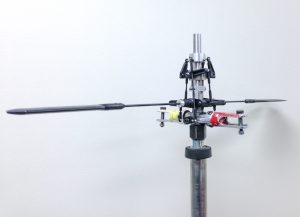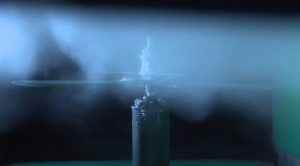The Spinning Rotor Blade (SRB) device is a wind turbine and/or helicopter sub-scale model developed at the Anti-icing Materials International Laboratory (AMIL). Two aluminum or fiberglass NACA blades are rotated through an icing cloud in a wind tunnel, representative of real atmospheric icing conditions, until ice shedding occurs. Ice adhesion on the blades can then be calculated from the test results. By applying different coatings to the blades, the SRB test is the most efficient way to quickly measure and compare ice adhesion on a substrate under representative atmospheric conditions.


Different atmospheric conditions can be reproduced in the wind tunnel to create glaze or rime ice accumulation on rotating blades. When the ice sheds under the effect of centrifugal force, the adhesion shear stress is calculated and can be compared for various icephobic coatings. Blades can also be submitted to Accelerated UV and Weathering degradation and retested to quantify the effect of long outdoor exposure on their properties.

A stroboscope system, synchronized with the SRB, is installed on top of the wind tunnel. Coupled with a video camera system, the SRB blade can be recorded during the entire ice accretion and de-icing sequence as if it were static.
This test provides all the necessary information for the selection of the most effective coatings for different applications, or to assist in the development of specialized coatings.